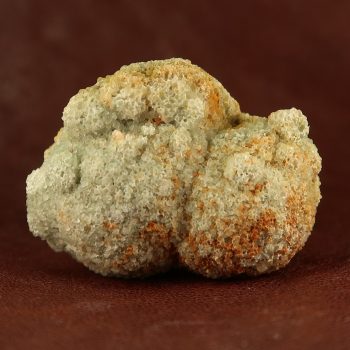Glauconite
Glauconite is a member of the mica group which forms in marine environments; it is often found as a fine sand, or sand grains cemented together.
Showing the single result
Information about Glauconite
Appearance
Glauconite is typically found as green to blueish-green granules or aggregates that can range from a fine, sand-like texture to larger, chunky masses. These granules often occur in marine sedimentary rocks.
Uses and History
Glauconite is used by gardeners and farmers because of its potassium content, which helps with plant growth. It is also used in water treatment processes to remove contaminants.
Glauconite was used in Europe as a green pigment for artists oil paints, where it was called green earth. It is also found as a mineral pigment in wall paintings and frescos from the ancient Roman Gaul.
Mineralogy
Hazards and Warnings
Mineral collectors should wash their hands after handling specimens, to avoid any exposure to potential toxins.
Almost all rocks, minerals (and, frankly, almost all other substances on earth) can produce toxic dust when cutting, which can cause serious respiratory conditions including silicosis.
When cutting or polishing rocks, minerals, shells, etc, all work should be done wet to minimise the dust, and a suitable respirator or extraction system should be used.
Translations
Arabic:
- جلوكونيت
Hindi:
- ग्लूकोनाइट
Portuguese:
Bengali:
- গ্লুকোনাইট
Indonesian:
Punjabi:
English:
Italian:
Russian:
- Глауконит
French:
Japanese:
Spanish:
German:
- Glaukonit
Korean:
- 글라우코나이트
Thai:
Gujurati:
- ग्लूकोनाइट
Mandarin Chinese:
Urdu:
Further Reading / External Links
- https://www.mindat.org/min-1710.html
- https://en.wikipedia.org/wiki/Glauconite
- https://www.alexstrekeisen.it/english/sedi/glauconite.php
Books/articles

